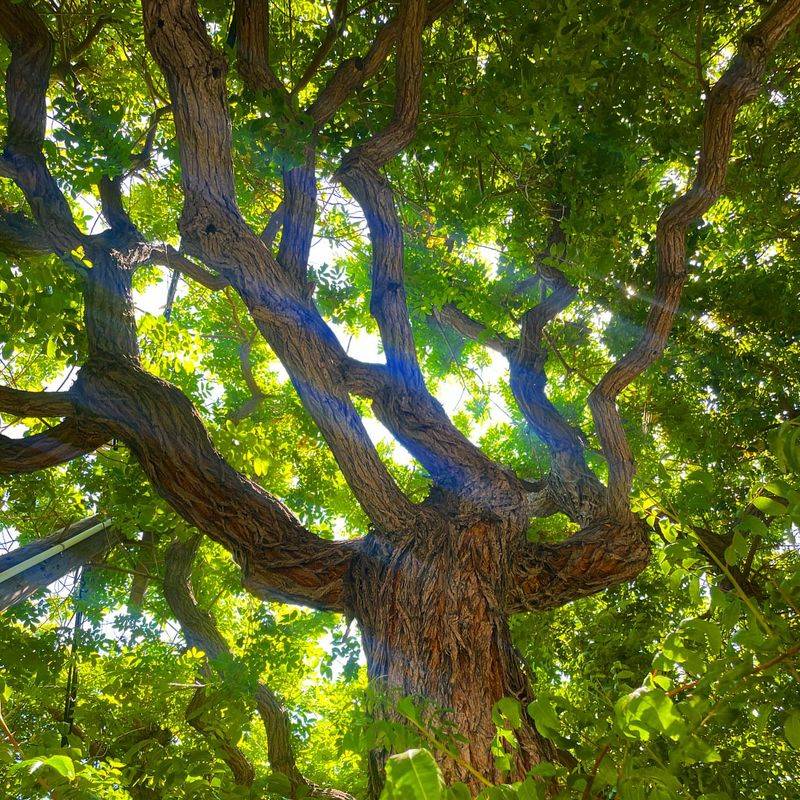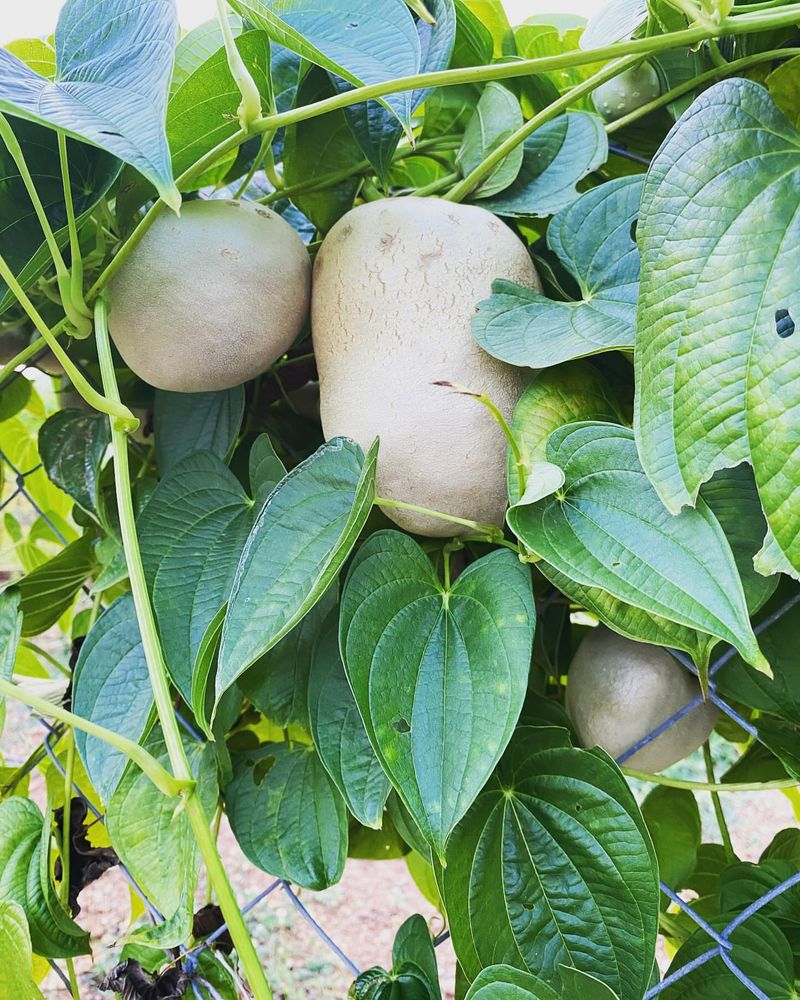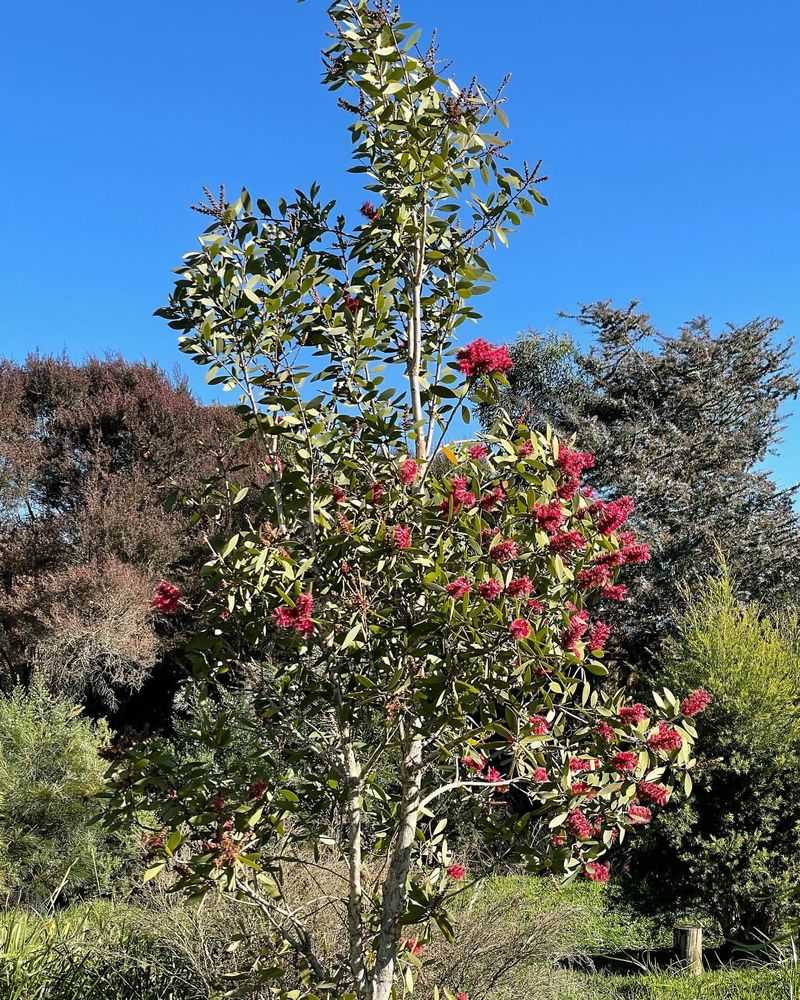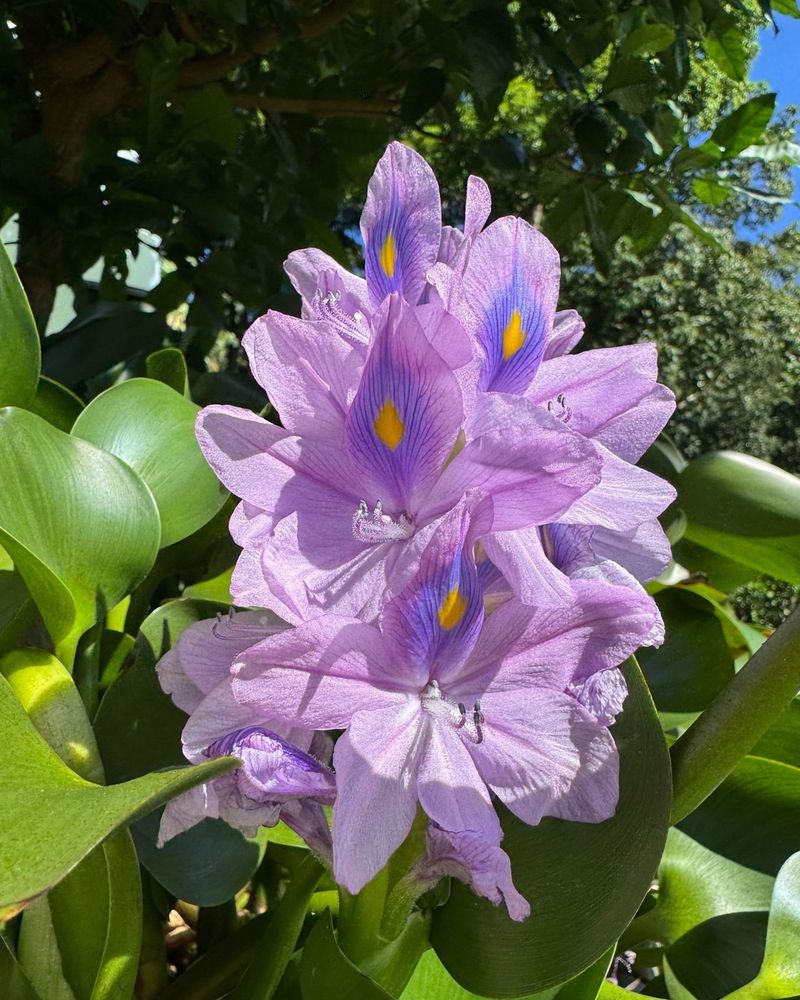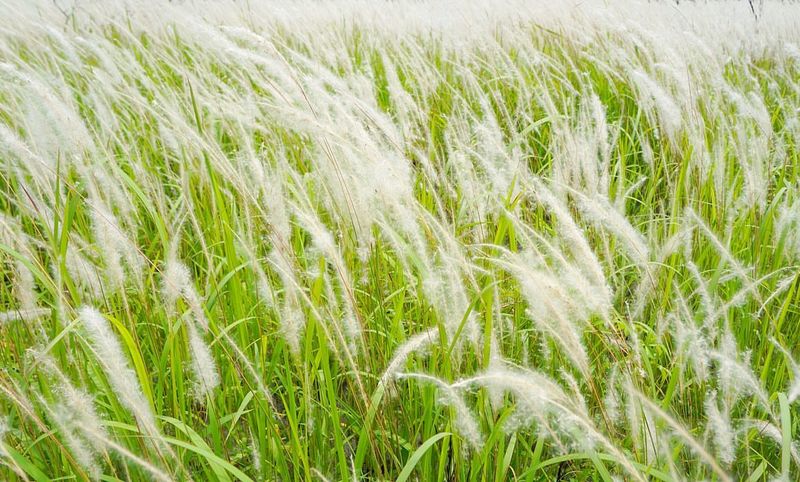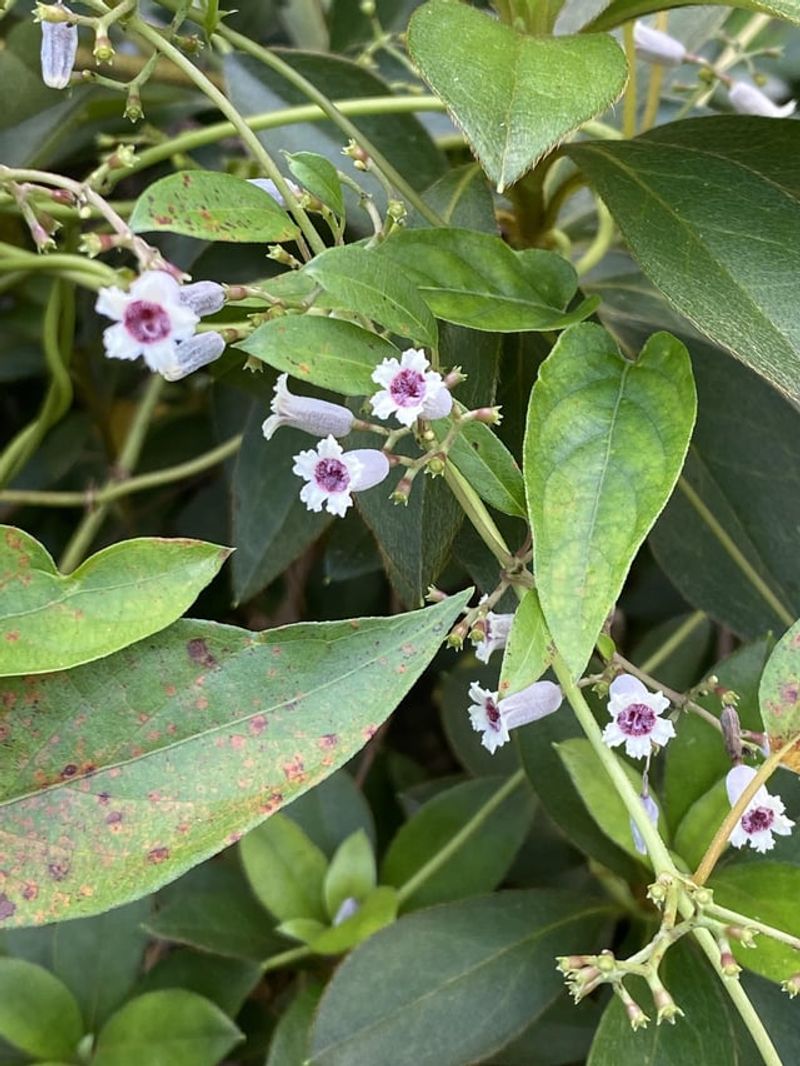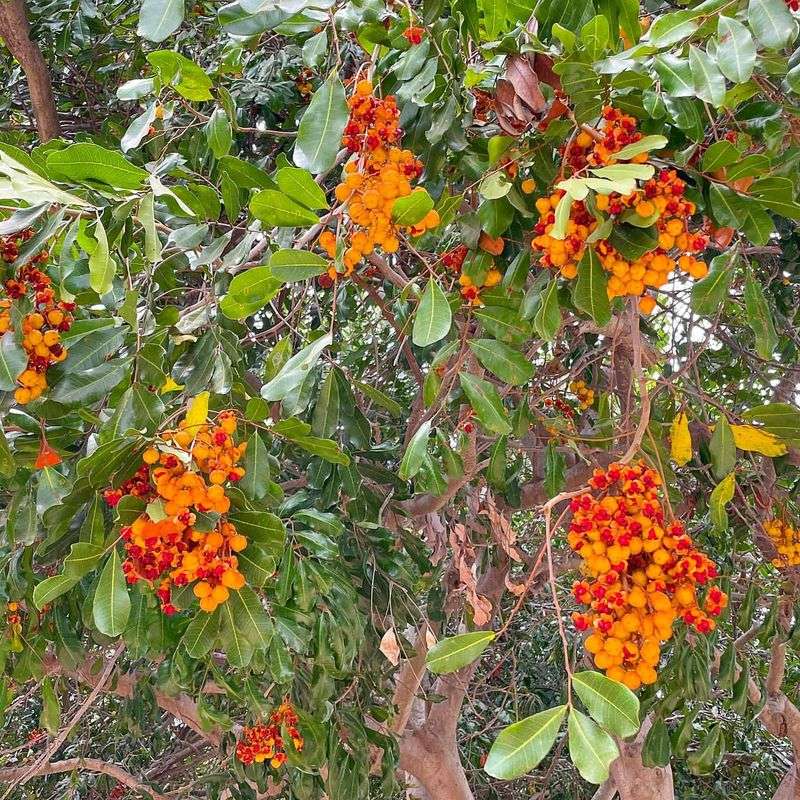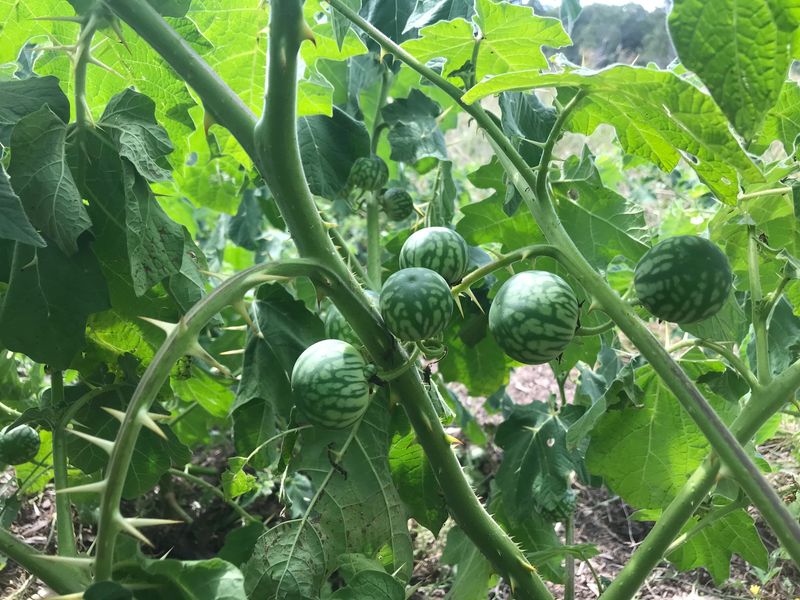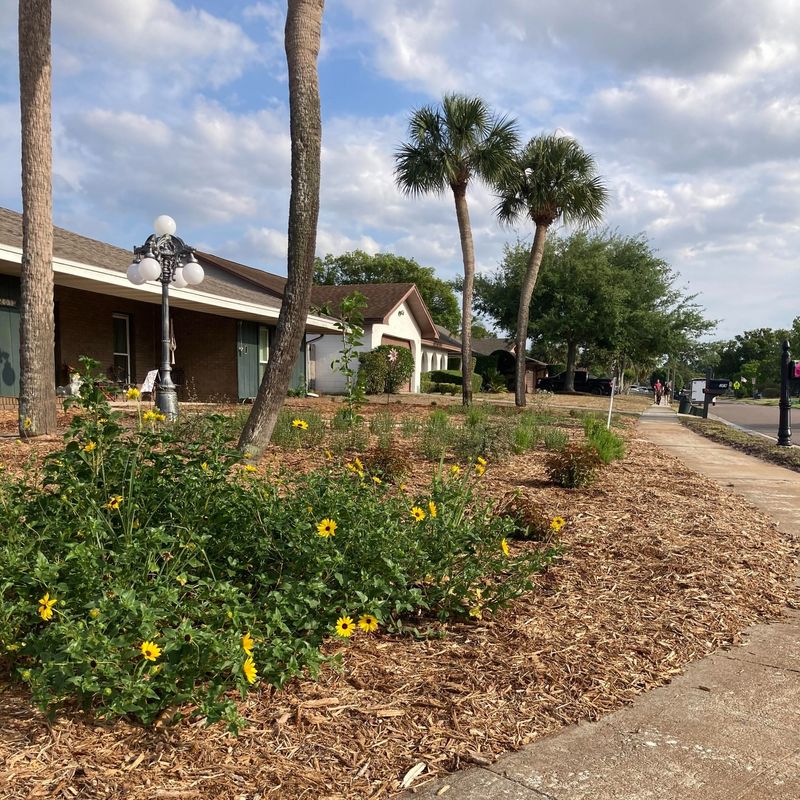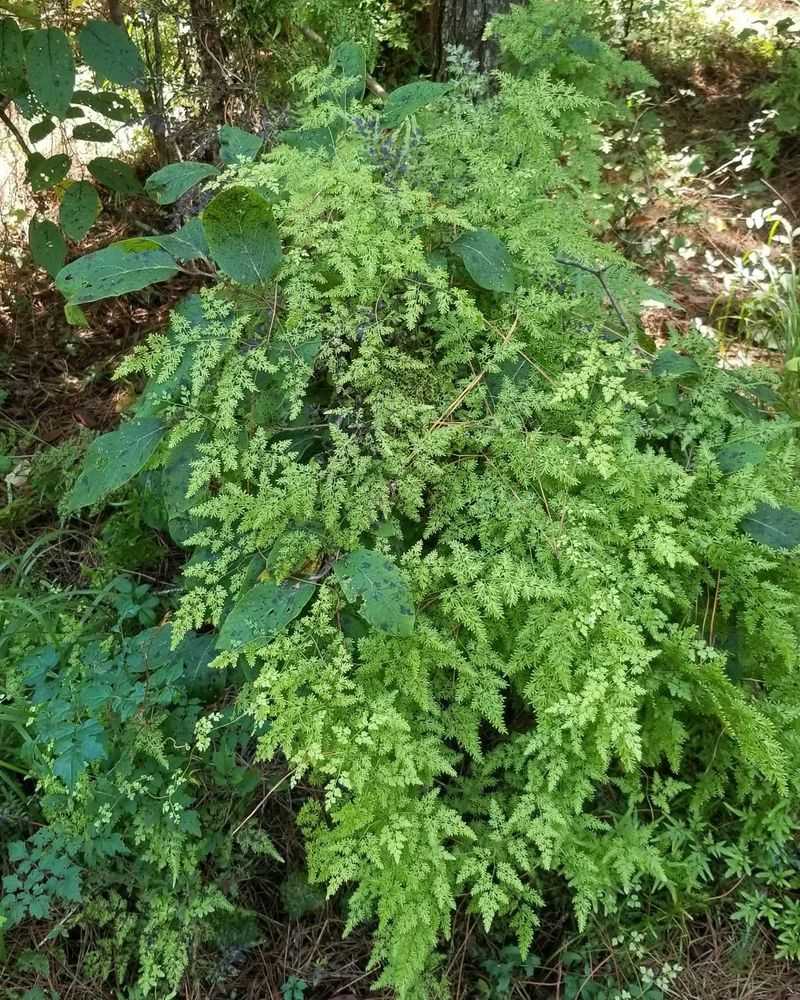Florida’s warm climate creates the perfect breeding ground for both beautiful native plants and troublesome invasives. Many gardeners unknowingly introduce harmful species that quickly take over, damaging local ecosystems and causing headaches for years to come.
Knowing which plants to avoid can save you time, money, and protect Florida’s delicate natural balance.
1. Brazilian Pepper Tree: The Holiday Menace
Red berries might look festive, but this South American invader creates dense thickets that choke out native vegetation across Florida. Originally brought as an ornamental in the 1840s, it now infests over 700,000 acres statewide.
Contact with its sap causes skin irritation similar to poison ivy. The berries, while attractive to birds who spread them far and wide, are mildly toxic to humans. Removing even small seedlings requires complete root extraction to prevent regrowth.
2. Air Potato: The Fast-Climbing Invader
Imagine waking up to find vines that grew 8 inches overnight! Air potato vines can climb 70 feet high, smothering trees and shrubs beneath their heart-shaped leaves. The plant produces potato-like tubers that drop to the ground and sprout new plants.
Originally from tropical Asia, this aggressive climber was introduced to Florida in 1905. A single vine can produce hundreds of “potatoes” each season. Thankfully, the air potato leaf beetle has been introduced as a biological control with good success.
3. Melaleuca: The Thirsty Tree
Nicknamed the “paper bark tree” for its flaky white bark, melaleuca was intentionally planted throughout south Florida in the early 1900s to drain the Everglades. Mission accomplished—too well.
A single tree produces millions of seeds annually, stored in woody capsules that open when stressed by fire or drought. Melaleuca forms dense stands that displace native vegetation and alter wildlife habitat. Its spongy bark acts as a fire accelerant, making wildfires more intense.
4. Water Hyacinth: The Floating Nightmare
Purple flowers floating on Florida waterways might look lovely, but don’t be fooled. Water hyacinth doubles its population every two weeks under ideal conditions, quickly clogging lakes and rivers with thick mats of vegetation.
Originally introduced to the US at the 1884 World’s Fair in New Orleans, this South American native spread rapidly through Florida’s connected waterways. The dense mats block sunlight, deplete oxygen, and impede boat traffic. Control efforts cost millions annually yet still struggle to keep pace with its growth.
5. Cogongrass: The Underground Menace
The silvery seed heads might catch your eye, but the real trouble lies below. Cogongrass creates an extensive underground network of sharp-pointed rhizomes that can penetrate the roots of nearby plants, injuring them.
Brought to Florida as packing material and later as forage grass, it now infests over 1.5 million acres statewide. The grass burns hotter than native species, creating dangerous wildfire conditions. Its dense growth crowds out native plants while providing poor habitat for wildlife.
6. Skunk Vine: The Smelly Spreader
Crush the leaves and you’ll immediately understand the name. This East Asian vine produces a distinctly skunky odor when damaged, yet continues to spread throughout Florida despite its unpleasant smell.
Introduced in the late 1800s, skunk vine climbs over native vegetation, forming dense blankets that block sunlight. Birds eagerly eat its small purple fruits, spreading seeds across wide areas. The vine’s ability to root at nodes where it touches the ground makes complete removal challenging.
7. Carrotwood: The Coastal Invader
Attractive orange seed capsules hide this tree’s true nature as a coastal ecosystem destroyer. Native to Australia, carrotwood was widely planted as an ornamental shade tree in Florida during the 1970s and 1980s.
Salt-tolerant and drought-resistant, it quickly escaped cultivation to invade barrier islands and coastal hammocks. Birds spread its seeds after eating the colorful fruits. Young trees can produce thousands of seeds annually, creating dense stands that displace native vegetation critical for wildlife habitat.
8. Tropical Soda Apple: The Prickly Problem
Covered in sharp thorns and producing golf ball-sized yellow fruits, this South American native creates painful barriers in pastures and natural areas. Cattle avoid grazing near it, reducing usable pasture land.
Each plant produces thousands of seeds spread by wildlife that eat the fruits. The thorns are strong enough to puncture tractor tires and make manual removal difficult. Since arriving in Florida in the 1980s, it has spread to over 1 million acres, costing ranchers millions in control efforts.
9. Caesar Weed: The Hitchhiker Plant
Those sticky burrs clinging to your socks and pet’s fur are this plant’s clever dispersal strategy. Caesar weed produces hook-covered seeds that attach to anything passing by, spreading far beyond its original location.
Originally from Africa, this member of the hibiscus family grows rapidly in disturbed areas. The plant can reach 6 feet tall and produce thousands of sticky burrs each season. Once established in gardens, complete removal requires digging out the entire root system.
10. Chinaberry Tree: The Toxic Beauty
Lavender flowers and golden berries create a deceptively pretty package for this highly toxic invader. All parts contain chemicals that can cause vomiting, seizures, and even death if ingested, particularly dangerous for curious children and pets.
Native to Asia, chinaberry was introduced as an ornamental shade tree but quickly escaped cultivation. Birds spread the seeds after eating the berries, creating new infestations. The tree’s aggressive growth and allelopathic properties (releasing chemicals that inhibit other plants) allow it to form dense stands.
11. Japanese Climbing Fern: The Delicate Destroyer
Lacy, fern-like foliage belies this plant’s aggressive nature. Vines can grow up to 90 feet long, climbing high into tree canopies and forming dense mats that smother native vegetation.
Spores travel on wind currents, allowing rapid spread across landscapes. Originally introduced as an ornamental from Asia, it now infests natural areas throughout Florida. The fern’s ability to survive fire gives it an advantage over native species, as it quickly resprouts and colonizes burned areas.


